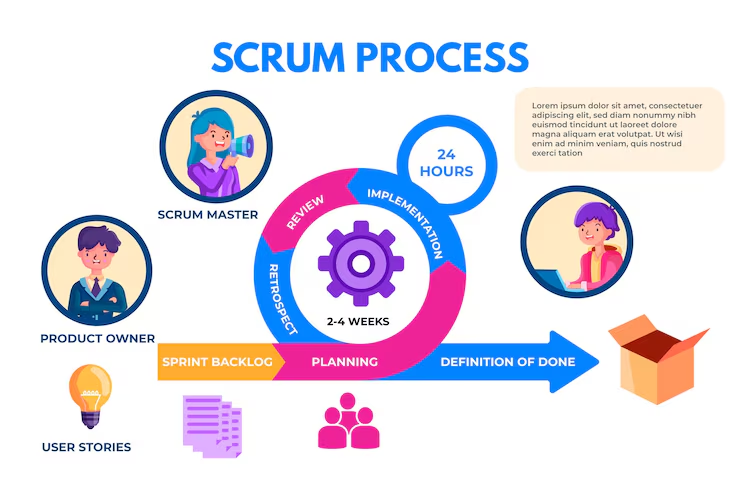
Close
In the realm of software engineering, the significance of a well-defined team structure cannot be overstated. A coherent team structure serves as the backbone of any successful software project, providing clarity and direction to the myriad of tasks that need to be accomplished. When team members understand their roles and how they fit into the larger picture, it fosters a sense of ownership and accountability.
This clarity not only enhances individual performance but also promotes synergy among team members, allowing them to collaborate more effectively. A well-organized team structure can streamline workflows, reduce redundancies, and ultimately lead to higher quality outputs. In an industry where deadlines are often tight and expectations are high, having a solid framework in place can make all the difference between a project that flounders and one that flourishes.
Moreover, a thoughtfully designed team structure can adapt to the evolving needs of a project. As software development is inherently dynamic, with requirements frequently changing due to user feedback or market demands, a flexible team structure allows for quick pivots without losing momentum. This adaptability is crucial in maintaining productivity and ensuring that the team can respond to challenges as they arise.
By establishing clear lines of communication and delineating responsibilities, teams can navigate complexities with greater ease. In essence, the importance of team structure in software engineering lies not only in its ability to enhance efficiency but also in its capacity to foster resilience in the face of change.
At the heart of this structure are developers, responsible for writing and maintaining the code that forms the foundation of the software product. Their expertise in programming languages and frameworks is essential for translating project requirements into functional applications.
However, developers do not work alone; they rely on collaboration with other roles such as quality assurance (QA) engineers, who ensure that the software meets specified standards before it is released. QA engineers conduct rigorous testing to identify bugs and usability issues, playing a critical role in maintaining the integrity of the final product.
In addition to developers and QA engineers, other key roles include project managers, who oversee the project’s progress and ensure that it stays on track regarding timelines and budgets. They act as liaisons between stakeholders and the technical team, translating business needs into actionable tasks. Furthermore, user experience (UX) designers are integral to creating intuitive interfaces that enhance user satisfaction. Their focus on usability ensures that the software not only functions well but also provides a seamless experience for end-users.
Each role within a software engineering team is interdependent, highlighting the importance of collaboration and communication in achieving project goals.

The Agile methodology has revolutionized how software engineering teams are structured and operate. Unlike traditional models that often rely on rigid hierarchies and linear processes, Agile promotes a more fluid and collaborative approach. In an Agile environment, teams are typically cross-functional, meaning that they encompass all necessary skills within a single unit.
This structure allows for rapid iterations and continuous feedback, enabling teams to respond swiftly to changes in requirements or market conditions. By breaking down silos and encouraging collaboration among diverse roles, Agile teams can deliver incremental value throughout the development process. Furthermore, Agile emphasizes self-organization, empowering teams to make decisions about how best to accomplish their work.
This autonomy fosters a sense of ownership among team members, motivating them to take initiative and contribute creatively to problem-solving efforts. Daily stand-up meetings and regular sprint reviews facilitate open communication, ensuring that everyone is aligned on goals and progress. The Agile approach not only enhances productivity but also cultivates a culture of trust and accountability within the team.
As a result, organizations that adopt Agile principles often experience improved morale and higher levels of engagement among their software engineering teams.
Effective collaboration and communication are paramount in any software engineering team, as they directly influence the quality of the final product. In an environment where multiple stakeholders are involved—ranging from developers to project managers—clear communication channels must be established to ensure that everyone is on the same page. Regular meetings, such as sprint planning sessions or retrospectives, provide opportunities for team members to share updates, voice concerns, and brainstorm solutions collectively.
These interactions not only facilitate information sharing but also strengthen interpersonal relationships within the team, fostering a collaborative spirit that is essential for success. Moreover, leveraging modern communication tools can significantly enhance collaboration among team members, especially in remote or distributed settings. Platforms such as Slack or Microsoft Teams allow for real-time discussions and file sharing, breaking down geographical barriers that may hinder effective teamwork.
Additionally, project management tools like Jira or Trello help track progress and assign tasks transparently, ensuring that everyone understands their responsibilities and deadlines. By creating an environment where open dialogue is encouraged and technology is utilized effectively, software engineering teams can navigate challenges more efficiently and produce higher-quality outcomes.
Leadership plays a crucial role in shaping the dynamics of a software engineering team. A strong leader not only provides direction but also inspires team members to perform at their best. Effective leaders possess a deep understanding of both technical aspects and interpersonal skills, allowing them to guide their teams through complex projects while fostering a positive work environment.
They set clear expectations and provide constructive feedback, helping individuals grow professionally while aligning their efforts with organizational goals. Furthermore, leaders must be adept at conflict resolution, addressing any issues that arise within the team promptly to maintain morale and productivity. In addition to managing day-to-day operations, leaders are responsible for cultivating a culture of innovation within their teams.
By encouraging experimentation and risk-taking, they empower team members to explore new ideas and approaches without fear of failure. This mindset is particularly important in software engineering, where technological advancements occur rapidly, necessitating continuous learning and adaptation. A leader who champions professional development—whether through training opportunities or mentorship—can significantly enhance the team’s capabilities and overall performance.
Ultimately, effective leadership is instrumental in guiding software engineering teams toward success while fostering an environment where creativity and collaboration thrive.

The adaptability of team structure is vital when it comes to addressing the unique demands of various software projects. Different types of projects—ranging from small-scale applications to large enterprise systems—require distinct approaches in terms of team composition and organization. For instance, smaller projects may benefit from a leaner team structure with fewer roles, allowing for quicker decision-making and faster delivery times.
In contrast, larger projects often necessitate more specialized roles and a hierarchical structure to manage complexity effectively. Understanding these nuances enables organizations to tailor their team structures to optimize performance based on project size and scope. Moreover, the nature of the project itself can dictate how teams are organized.
For example, projects with rapidly changing requirements may thrive under an Agile framework that promotes flexibility and iterative development. Conversely, projects with well-defined specifications might benefit from a more traditional waterfall approach where phases are clearly delineated. By assessing both the project type and its specific requirements, organizations can create an environment conducive to success.
This adaptability not only enhances efficiency but also ensures that teams remain responsive to challenges as they arise throughout the development lifecycle.
Building an effective software engineering team is fraught with challenges that can impede progress if not addressed proactively. One common issue is the difficulty in finding individuals with the right skill sets who also fit well within the existing team culture. The tech industry is highly competitive; thus, attracting top talent requires organizations to offer not only competitive salaries but also opportunities for growth and development.
To mitigate this challenge, companies should invest in robust recruitment strategies that emphasize cultural fit alongside technical expertise. Additionally, fostering an inclusive workplace culture can help retain talent by making employees feel valued and engaged. Another significant challenge lies in managing remote or distributed teams effectively.
While remote work offers flexibility and access to a broader talent pool, it can also lead to communication breakdowns and feelings of isolation among team members. To combat these issues, organizations should prioritize regular check-ins and virtual team-building activities that promote connection among remote workers. Utilizing collaborative tools can also bridge gaps in communication by facilitating real-time discussions and project tracking.
By recognizing these challenges and implementing targeted solutions, organizations can build cohesive software engineering teams capable of delivering high-quality results consistently.
If you’re exploring the ideal team structure in software engineering, you might also find value in understanding how to recognize success in your projects. A related article that delves into this topic is “How Will You Know Success When It Shows Up?” which discusses key indicators of success in team projects and can complement your understanding of effective team structures. You can read more about this on How Will You Know Success When It Shows Up?. This article can provide insights into measuring the effectiveness of your team structure and adjusting strategies for optimal outcomes.
The ideal team structure in software engineering typically involves a combination of roles such as software developers, quality assurance engineers, product managers, and designers working together in a collaborative and cross-functional manner.
Key roles in a software engineering team include software developers, who write and maintain code; quality assurance engineers, who test and ensure the quality of the software; product managers, who define the product vision and roadmap; and designers, who create the user interface and experience.
A cross-functional team in software engineering brings together individuals with diverse skills and expertise, allowing for better collaboration, faster decision-making, and a more holistic approach to problem-solving. This can lead to more efficient and effective software development.
Common team structures in software engineering include agile teams, which are self-organizing and cross-functional; DevOps teams, which integrate development and operations functions; and matrix teams, which involve team members reporting to multiple managers.
The team structure can impact the success of software engineering projects by influencing communication, collaboration, and decision-making within the team. A well-designed team structure can lead to improved productivity, higher quality output, and better alignment with project goals.
Augmented Team Pvt Ltd

